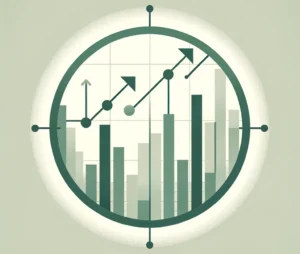Choosing a career path feels a bit like deciding what to wear to an event where the dress code is a mystery—exciting and slightly anxiety-inducing. You rummage through the possibilities, hoping your choice aligns with success, happiness, and a little bit of sparkle. For those drawn to the allure of fabrics, colors, and trends, the world of fashion design beckons with its glamorous yet demanding arms. But is it the right fit for you?
In this blog post, we’ll unpack the vibrant suitcase of fashion design as a career choice, helping you understand if it’s the wardrobe of opportunities you’ve been looking for or if it’s better left on the rack.
Quick Takeaways:
- Building a strong foundation in both the creative and technical aspects of fashion design is crucial—education, experience, and an evolving portfolio can set you apart.
- Embrace the digital world—curate an online portfolio and utilize social media for networking and showcasing your designs.
- Prepare for a dynamic but challenging career path; resilience, adaptability, and a unique voice are key to success in the competitive world of fashion design.
What Skills and Qualities Are Essential for a Fashion Designer?
Embarking on a career in fashion design isn’t just about harboring a passion for style or an eye for color. It’s a complex craft requiring a toolkit of both inherent talents and honed skills. Here’s the fabric we’re working with:
- Creativity and Vision: At its heart, fashion design is an art. It demands an innovative mindset and the ability to envision and bring to life new trends.
- Technical Skills: This includes proficiency in sketching and familiarity with design software. Being adept at technical drawing transforms your visionary concepts into tangible creations.
- Textile Knowledge: An in-depth understanding of different materials, how they wear, and their care, plays a crucial role in practical and aesthetic aspects of your designs.
- Trend Awareness: Fashion is an ever-changing beast. Keeping your finger on the pulse, from global trends to street style, ensures relevance.
- Communication and Collaboration: Often overlooked, these skills are vital for bringing designs to life, requiring effective teamwork with tailors, suppliers, and marketers.
A unique, often missed tip for aspiring designers is to cultivate a “Digital Portfolio Mindset” from day one. In today’s digital age, your online portfolio is as crucial as the designs themselves, showcasing not just your creativity but your journey and evolution as a designer.
How Rewarding Can a Career in Fashion Design Be?
Beyond the glitz and glamour, the real question is what rewards await in the realm of fashion design. Yes, the financial aspect matters, but it’s the mosaic of fulfillment that paints the full picture:
- Financial Potential: While starting can be modest salary-wise, with experience, reputation, and a bit of entrepreneurial spirit, the sky’s the limit.
- Creative Satisfaction: Seeing your ideas move from sketchpad to wardrobe is an unparalleled joy. It’s about bringing beauty and innovation into the world, one garment at a time.
- Influence and Fame: Successful designers have the power to influence not just fashion trends but culture at large. Fame in the fashion world can also open doors to broader creative pursuits.
- Dynamic Environment: No two days are the same. From sourcing materials to fashion shows, the variety keeps the career vibrant and fulfilling.
A real-world motivator here is to look at the journeys of designers like Virgil Abloh or Rihanna. They blended their unique voice with entrepreneurial acumen, showcasing the vast horizons awaiting in fashion design.
What Challenges Do Fashion Designers Face?
However, it’s not all smooth stitching. The path of a fashion designer is strewn with challenges that test resilience and adaptability:
- Competitive Field: Standing out in a sea of talent can be daunting. It requires not just skill but perseverance and a unique voice.
- Pressure to Innovate: The fashion industry thrives on novelty, placing designers under constant pressure to deliver fresh ideas.
- Market Fluctuations: Economic downturns can hit luxury industries hard. A successful designer must navigate these unpredictable waters with savvy and strategic planning.
Addressing these challenges head-on is pivotal. An often overlooked strategy is developing a strong personal brand and online presence. This isn’t just about showcasing designs but building a story that resonates with your audience, creating not just customers but fans.
Remember, though the thread of this conversation weaves through various aspects of fashion design, the tapestry isn’t complete. This is but a fragment of the bigger picture, one that also includes the logistical, ethical, and business dimensions of fashion. Stay tuned as we unravel those threads in forthcoming sections, stitching together a comprehensive view of what a career in fashion design truly entails.
What Are the First Steps to Becoming a Fashion Designer?
If the glitz and glamour of the fashion industry have caught your eye, and you find yourself dreaming of designing collections that might one day grace the runways of Paris or Milan, you’re likely asking yourself, “Where do I start?” Well, it’s time to translate those dreams into action. Here’s your roadmap to taking those first crucial steps towards a career in fashion design.
Education and Training: Your Fashion Foundation
At the heart of every successful fashion designer is a solid education and training in fashion design. This doesn’t necessarily mean you have to spend four years getting a degree (although it certainly doesn’t hurt), but you do need a foundational understanding of the principles of design, textiles, and fashion history.
Consider the following as you chart your educational path:
- Fashion Design Degrees: Many universities and design schools offer degrees in fashion design, which provide a comprehensive understanding of the industry, from sewing and pattern-making to fashion marketing and history.
- Online Courses: Platforms like Coursera and Udemy offer courses created by industry professionals and can be a more flexible option for those balancing other commitments.
- Workshops and Short Courses: Often offered by design schools or local community centers, these can give you a taste of fashion design and help you build specific skills.
Remember, the world of fashion is always evolving, so whatever educational path you choose, stay curious and keep learning.
Building a Portfolio: Show Off Your Best Work
Your portfolio is like your fashion diary, showcasing your style, skills, and evolution as a designer. It’s also one of the most crucial tools in your kit when it comes to landing a job or attracting freelance clients. Here are a few tips on creating a portfolio that stands out:
- Quality Over Quantity: It’s better to have fewer pieces that showcase your best work than a thick portfolio filled with “okay” designs.
- Diversity: Show a range of skills and styles. Include various designs, such as casual wear, evening wear, and avant-garde pieces, if that’s within your range.
- Process Work: Include sketches and mood boards to give viewers insight into your creative process.
- Digital Presence: In today’s digital age, having an online portfolio on platforms like Behance or your own professional website is crucial.
Networking: Your Pathway to Opportunity
In fashion, sometimes it’s not just about what you know, but also who you know. Networking can open doors to internships, job opportunities, and collaborations that might not be accessible otherwise.
- Attend Industry Events: Whether it’s a fashion week, trade show, or a local design talk, make it a point to show up. These events are golden opportunities to meet industry professionals.
- Social Media: LinkedIn, Instagram, and Facebook can be powerful tools for connecting with other designers, fashion brands, and industry influencers. Don’t underestimate the power of a well-crafted DM or comment.
- Mentorship: Find someone whose work you admire and reach out for guidance. A mentor can provide invaluable advice, insights, and introductions.
The Unique Tip: Create Your Own Opportunities
Here’s something not everyone will tell you: in the early stages of your career, don’t shy away from creating your own opportunities. This could mean designing a small collection and collaborating with local boutiques for a pop-up event or even organizing a community fashion show. These initiatives not only showcase your creativity and drive but also bring your work directly to a potential audience.
Becoming a fashion designer is not without its challenges. It requires a blend of creativity, technical skills, and business acumen, not to mention a thick skin for the industry’s competitive nature. However, for those who are passionate about fashion, the rewards—both personal and professional—can far outweigh these challenges.
Remember, every iconic designer started somewhere, often with nothing more than a sketchpad and a dream. With determination, networking, and a commitment to learning, you too could see your designs on the runway someday. Here’s to taking those first steps toward a bright and stylish future!







